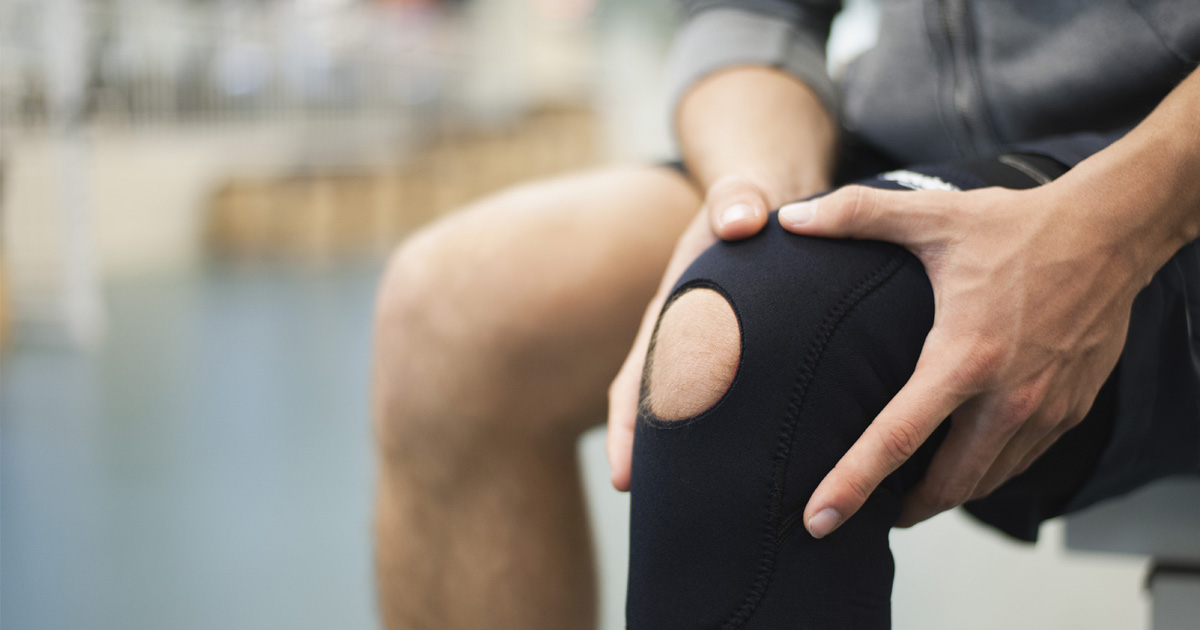Building a Stronger You: Living with Osteoarthritis

Millions of people live with pain and stiffness caused by arthritis. The most common kind of arthritis, osteoarthritis, makes it hard for sufferers to move freely and enjoy daily life.
The AHN Orthopaedic Institute at Canonsburg Hospital offers care to help patients with osteoarthritis feel better and stay active.
What is osteoarthritis?
Osteoarthritis happens when cartilage — the soft tissue between bones — wears down over time. Cartilage acts like a pillow between your bones, helping joints move smoothly. When it breaks down, bones can rub together and cause symptoms like stiffness, joint pain, and balance issues.
Osteoarthritis most commonly affects aging adults or people with past injuries. Other types of arthritis — like rheumatoid arthritis and psoriatic arthritis — cause inflammation in the joints that can also lead to osteoarthritis.
Treatment options
There are many treatment options available to manage osteoarthritis and reduce pain, including:
- Medications taken by mouth or applied to the skin to help with inflammation
- Steroid and lubricating injections for fast pain relief and smoother-moving joints
- Braces to support your legs, knees, or hips
- Physical therapy to improve joint movement
- Surgery to replace damaged joints
“Many people put their lives on hold because of their pain,” said Eric Yakish, MD, orthopaedic surgeon at AHN Canonsburg Hospital. “We encourage patients to come to us as early as possible to explore treatment options, so we can help them get back to doing the things they love.”
When to consider surgery and how to prepare for it
Surgery can feel like a big decision. But it may be the right choice for you if you’ve lived with pain for a long time — especially if you struggle with simple tasks like getting out of bed or bathing — and if other joint pain treatments haven’t brought you relief.
Before surgery, your doctor may order imaging, like X-rays, CT scans, or MRIs to confirm you are healthy enough for the procedure. Your care team may also suggest that you make some lifestyle changes to prepare for the procedure, such as:
- Exercising regularly
- Eating a healthy diet
- Quitting smoking
“Going into surgery as healthy as possible helps your body heal faster,” said Dr. Yakish. “Lifestyle changes can make a big difference in how you feel after.”
Surgery and recovery: what to expect
During surgery for osteoarthritis, your doctors will:
- Remove the bone ends of the joint with the damaged cartilage
- Replace them with strong, artificial pieces that help you move without pain
Surgery for osteoarthritis usually lasts 1 to 1.5 hours. Once it’s over, you’ll be taken to the recovery room and given medicine to manage any post-surgery pain. You may be up and walking again as soon as four hours after surgery.
Your doctors will work with you and your support network to determine when you are ready to go home, and what at-home recovery will look like for you.
Surgery side effects
While surgery will help improve your joint movement and lessen your pain, you may have some side effects shortly after, such as:
- Numbness on the outer thigh
- Swelling or soreness
- Stiffness
- Discomfort when trying to sleep
Your doctor will discuss what treatment options are available to help relieve your side effects for a smoother recovery.
Supporting you for stronger days ahead
If you’re living with osteoarthritis, it might be time to get help. Learn more about treatment options available to you at the AHN Orthopaedic Institute at Canonsburg Hospital.
About Eric J Yakish, MD
Dr. Eric J. Yakish is a physician with AHN Orthopaedic Institute, specializing in orthopaedic surgery. He is skilled at robotic surgical reconstruction and repair of the hips and knees.
Our orthopaedic team helps you get moving again, without pain. We provide a range of diagnostic and treatment services for bone and muscle conditions, including sports medicine care and joint replacement surgery.

